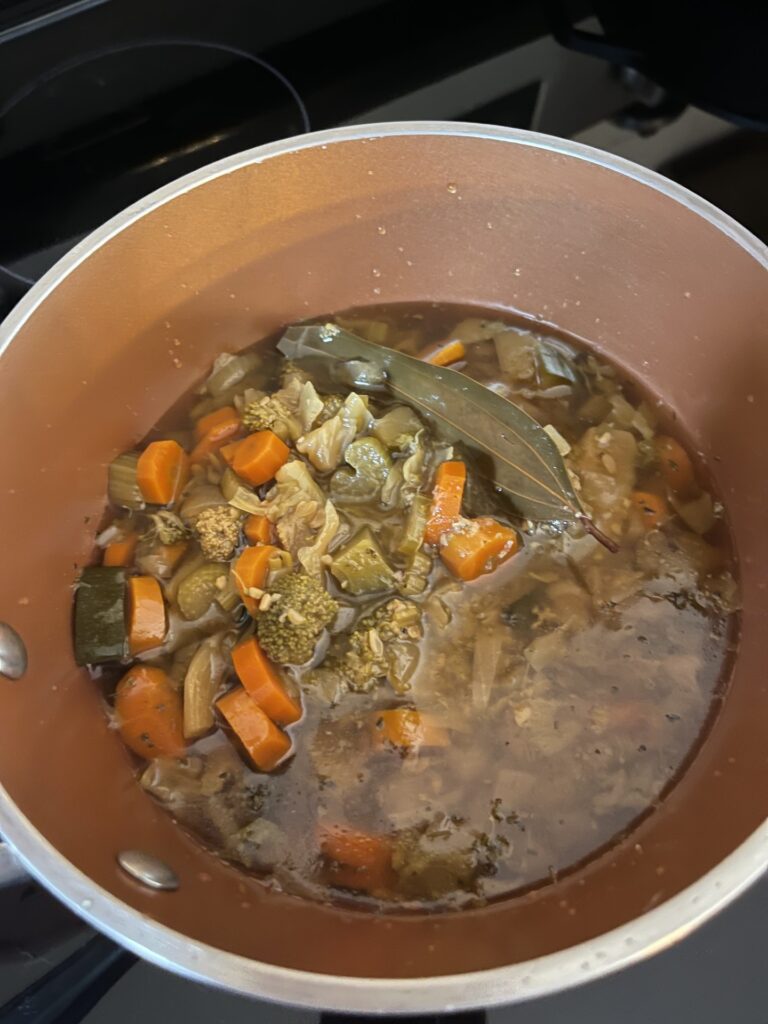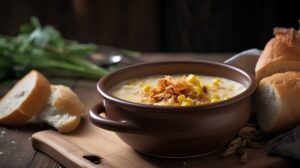Check this out!
Cabbage soup has been around for centuries and its exact origin is difficult to pinpoint due to its widespread consumption in various cultures. However, it is believed to have originated in Eastern Europe, where cabbage has long been a staple vegetable due to its hardiness and availability, especially during colder months.
Historically, cabbage soup was a peasant dish, as cabbage was a cheap and readily available ingredient for those with limited resources. It could be easily grown in many climates and stored for long periods, making it an ideal ingredient for creating hearty, nourishing soups.
Over time, cabbage soup recipes have evolved and adapted to different regions and culinary traditions. Variations of cabbage soup can be found in cuisines around the world, including Polish kapuśniak, Russian shchi, German sauerkrautsuppe, and many others. Each culture adds its own unique twist to the basic cabbage soup recipe, incorporating local ingredients and flavors.

My recipe too has evolved becoming the perfect way to use up the end of the garden vegetables. This recipe is also the perfect way to use vegetables like zucchini and broccoli., who are in over-abundance thanks to an amazing growing season!
If that isn’t enough reason to create and preserve this delicious soup, here are some fantastic health benefits of consuming cooked cabbage:
- Rich in Nutrients: Cabbage is low in calories but high in essential nutrients like vitamin C, vitamin K, vitamin B6, folate, and manganese.
- Fiber: Cabbage is a good source of dietary fiber, which aids digestion, promotes regularity, and supports gut health.
- Antioxidants: It contains antioxidants like polyphenols and sulfur compounds, which help neutralize harmful free radicals in the body and reduce the risk of chronic diseases.
- Anti-inflammatory: Certain compounds in cabbage have anti-inflammatory properties, which may help reduce inflammation in the body and lower the risk of chronic diseases like heart disease and arthritis.
- Digestive Health: The fiber and water content in cabbage can help prevent constipation and promote a healthy digestive system.
- Heart Health: Studies suggest that regular consumption of cabbage may help lower cholesterol levels and reduce the risk of heart disease.
- Weight Management: Cabbage is low in calories and high in fiber, making it a filling food that can help with weight management and weight loss goals.
- Bone Health: Cabbage is a good source of vitamin K, which is important for bone health and may help reduce the risk of osteoporosis.
- Immune Support: The vitamin C content in cabbage helps support a healthy immune system, protecting against infections and illnesses.
Incorporating cooked cabbage into your diet can be a delicious and nutritious way to support overall health and well-being. So pull your pressure canner out of storage and grab your mason jars – this one is a winner!

Cabbage Vegetable Soup Canning Recipe
This hearty soup is the perfect meal in a jar for when cooking from scratch isn’t an option. I often eat this as my lunch with a slice of homemade bread or soda crackers. It is healthy, filling and the perfect means to incorporate more veggies into your diet.
Makes about 7 quarts or 14 pints
Ingredients
- 3 tablespoons olive oil
- 1 large onion, diced (1 1/2 cups)
- 4 celery stalks, diced (1 cup)
- 6 garlic cloves, minced
- 16 cups vegetable (or chicken) broth
- 1 head cabbage, chopped (6 cups)
- 6 carrots, chopped (3 cups)
- 2 zucchini, diced (2 1/2 cups)
- 2 cups broccoli florets
- 1 teaspoon dried thyme
- 1 teaspoon salt (optional)
- 1/2 teaspoon ground black pepper
- 7 large bay leaves or 14 small bay leaves
Instructions
- In a large stockpot, add the oil, onion, celery and garlic. Cook through over medium-high heat until onions are translucent, about 8 minutes.
- Add the broth, cabbage, carrots, zucchini, broccoli, thyme, salt and pepper to the stockpot and stir to blend. Bring to a boil, boil hard for 2 minutes, stirring frequently.
- Be sure your jars are warm and ready to receive boiling soup. Place one large bay leaf in each quart, or one small bay leaf in each pint jar. Using a funnel, ladle hot soup into jars, being sure to evenly distribute the solids. Leave a 1-inch headspace.
- Wipe each jar rim with a washcloth dipped in vinegar. Add a lid and ring to each jar and hand tighten.
- Process in a pressure canner at 10 PSI or according to your elevation. Quarts process for 90 minutes and pints for 75 minutes. After processing and removing the canner lid when the PSI returns to zero, be sure to allow your jars to rest in the canner for 5 to 10 minutes prior to removing to cool.
Happy Canning!
xo
Diane, The Canning Diva®
www.canningdiva.com


